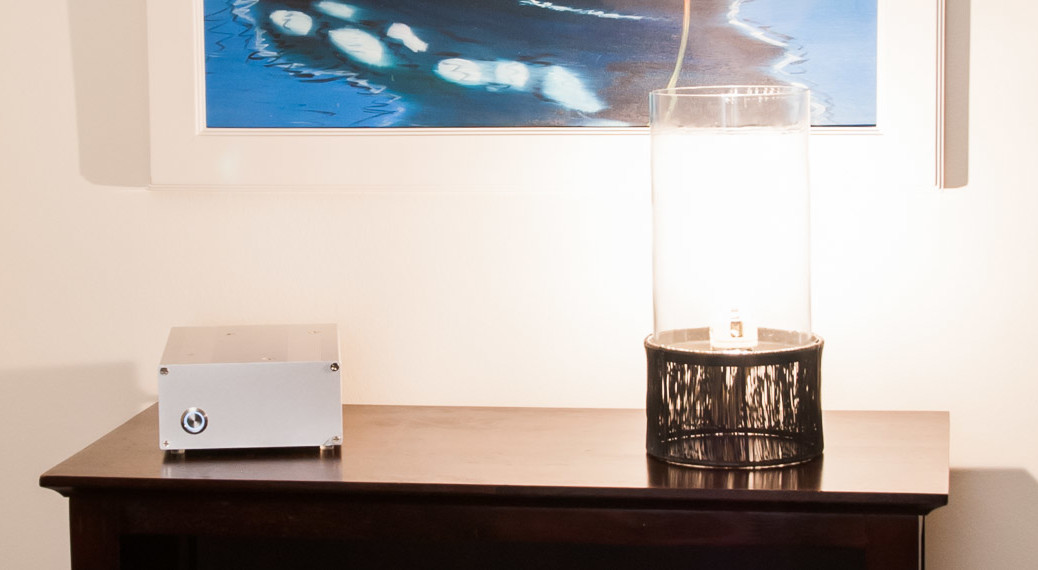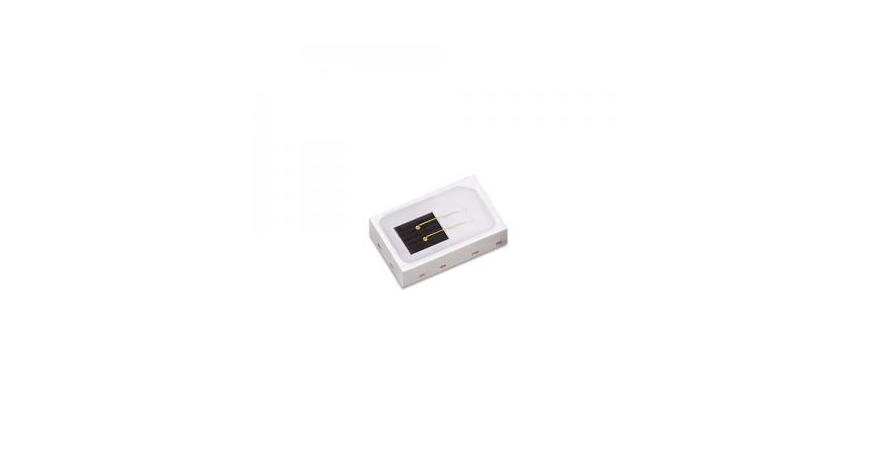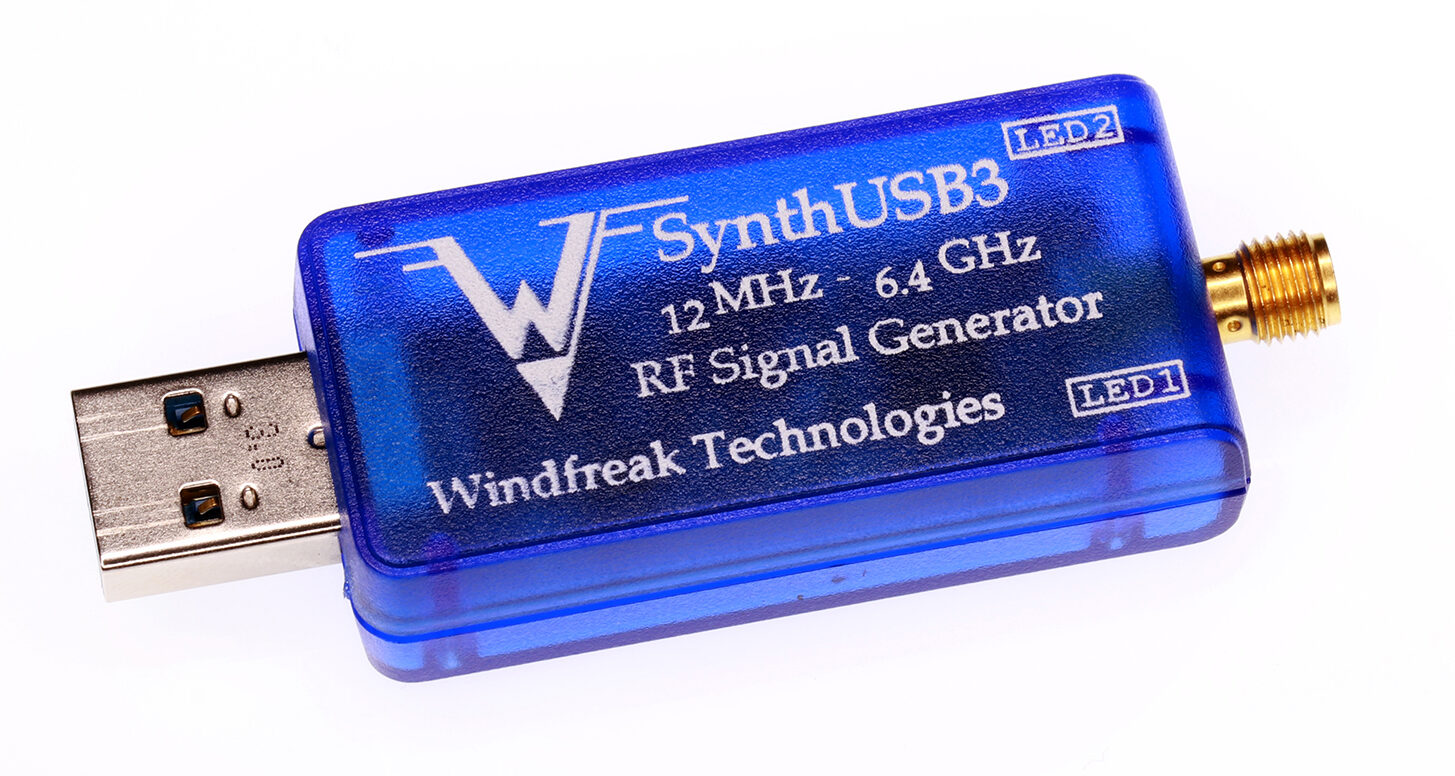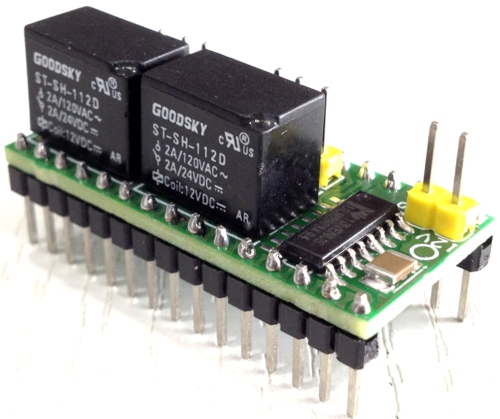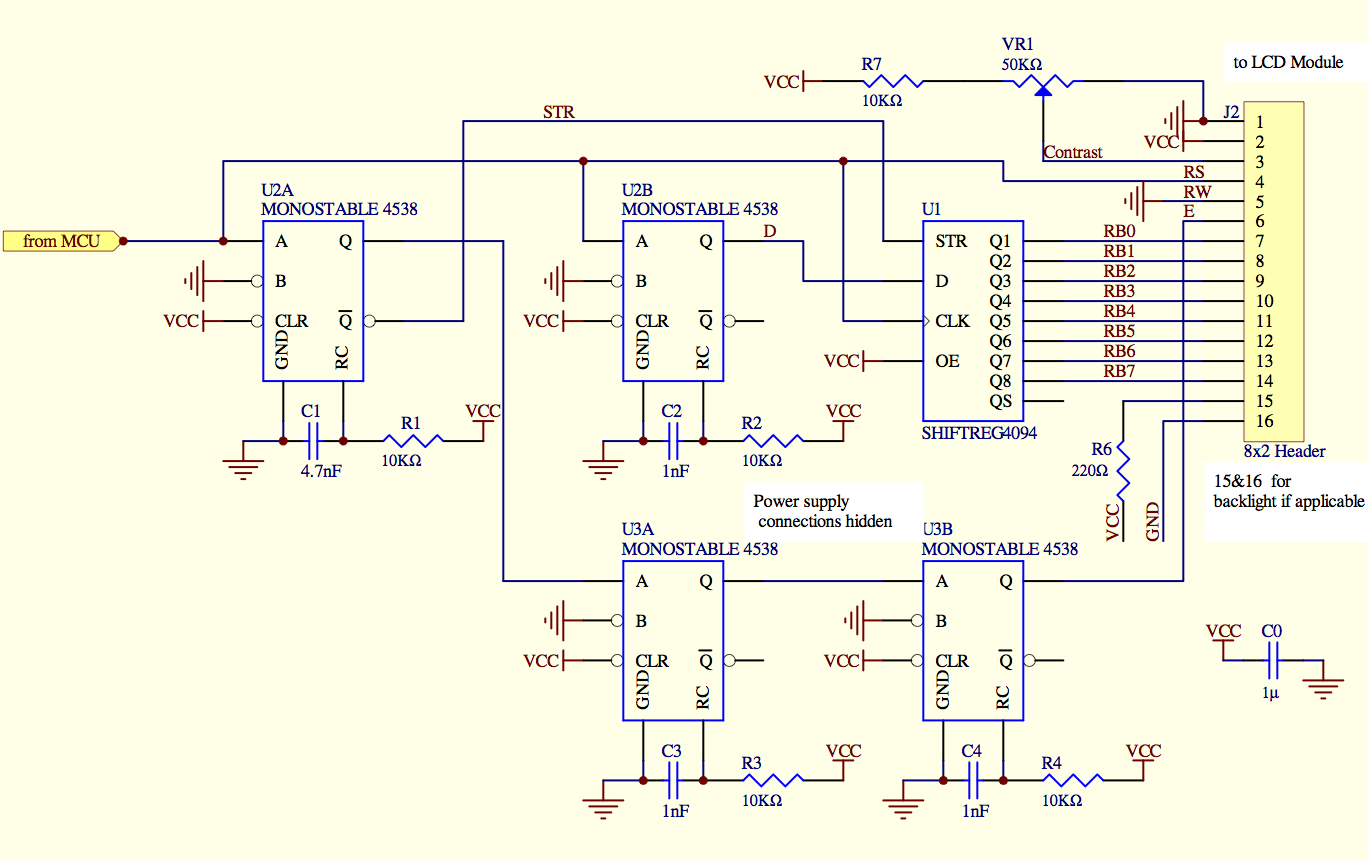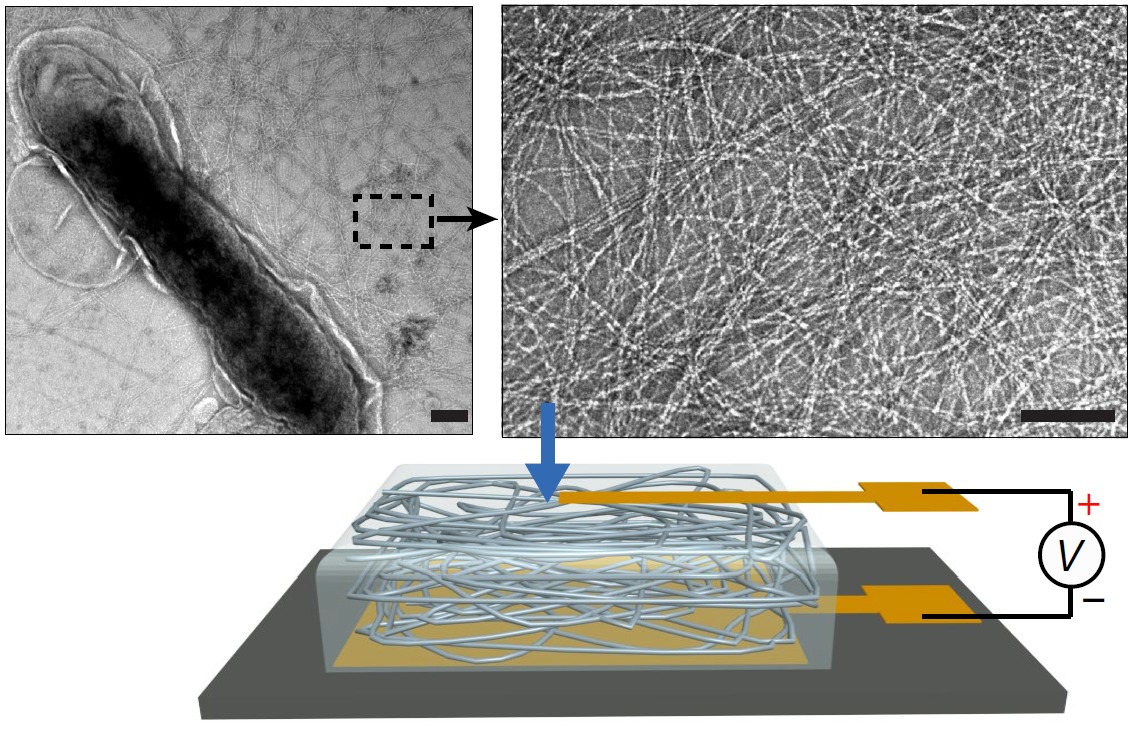
Leveraging the natural adsorption–desorption exchange of water molecules from ambient air at the interface of a nanoporous mesh of protein nanowires, a team of researchers from the University of Massachusetts has demonstrated a durable form of energy harvesting that could potentially compete with solar cells on volumetric power density. By Julien Happich @ eenewseurope.com
Publishing their results in the Nature journal under the title “Power generation from ambient humidity using protein nanowires”, the researchers describe a thin-film device (only 7µm-thick) consisting of a mesh of electrically conductive protein nanowires (sheared from the microorganism Geobacter sulfurreducens) laid on top of a large gold electrode over a glass substrate for the bottom side, and covered with a thin top electrode leaving the mesh exposed to ambient air.
In this configuration, the device, only a few millimetres square, was able to produce a sustained voltage of around 0.5 volts across the two electrodes, delivering a current density of around 17µA/cm2, for over 20h before self-recharging. The authors estimated the device’s power density to roughly 4mW/cm3, two orders of magnitude higher than previous reported energy-harvesting technologies relying on ambient, atmospheric moisture.

produced by the microorganism Geobacter sulfurreducens
(dark shape in the left panel). Scale bars, 100 nm.
A diagram of the device structure is shown at the bottom
They tested their device for more than two months, it maintained a stable direct-current voltage of between 0.4 and 0.6V with fluctuations in voltage only associated with changes in ambient relative humidity (with 40–50% relative humidity yielding the highest voltage. The device was proven to still output power at a relative humidity as low as 20% (comparable to a desert environment) as well as at 100% humidity.
When the film is exposed to ambient humidity, a self-maintained moisture gradient (a depth-dependent difference in moisture adsorption) forms within the film, the researchers observed, which itself creates an ionization gradient in the carboxylic groups or a concentration gradient in mobile protons of the nanowires’ surface functional groups. The resulting charge diffusion induces a counterbalancing electrical field or a potential analogous to the resting membrane potential in biological systems, the authors explain, noting that a wide range of synthetic protein nanowires would likely be suitable for the design of similar ambient air energy-harvesting devices.
Because water molecules in air naturally comprise ionized species, or are ionized when adsorbed on the nanowire surface, they can donate charges to the nanowire, supplying the closed-loop current flow driven by the voltage resulting from the moisture gradient, the researchers further explain.
University of Massachusetts – www.umass.edu





